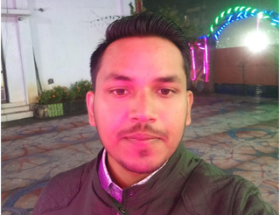Dr Jas Simran Singh Kehal
The theme of World Health Day 2019 is Universal health coverage: everyone, everywhere. On the 40th anniversary of Alma Ata Declaration, which declared health a human right for all, each United Nations country, including India signed the Astana Declaration in 2018. It endorsed the critical role of primary health care to ensure that everyone everywhere is able to enjoy the highest possible attainable standard of health. Indian constitution tasks the states to provide health facilities to its citizens. Judiciary has included Right to health under article 21. Despite the fact that the healthcare system in India is universal, there is exists a huge difference between services provided to rich against poor, rural against urban and public against private set up.
India is emerging as one of the fastest growing economies, currently being the 6th largest economy worldwide. Although the twelfth Five Year Plan recommended an increase in public expenditure on health to 2.5% of GDP by 2017 it still hovers around 1% which is far low as compared to China(3%) and the United States(8%), with 6% being the world’s average. Amongst the BRICS countries- Brazil spends around 8.3%, Russia 7%, and South Africa 8.8% while SAARC countries like Afghanistan spends 8.2%, Maldives 13.7%, and Nepal 5.8%. India continues to spend almost five times more on defence than in healthcare. India’s defence allocation this year (2019-2020) is Rupees 2,82,733 crore but health allocation is a mere Rupees 63,538 crore. Out of the 27 major items of expenditure, health gets 14th place in terms of budgetary priorities this year with defence at the second place. As per former chief of AIIMS Resident Doctors’ Association, Harjit Bhatti, budget allocations do not reflect government’s good intentions because Rs 6400 crore for 10 crore families comes down to Rs 640 per family and Rs 128 per person, which is “too low” to expect good treatment from hospitals.
This low spending by India on its healthcare has forced out of pocket expenditure on its citizens. Poor quality and insufficient access to healthcare services, especially to the rural population and urban poor, has gradually bred inequities. Around 7% of people in India are going below the poverty line each year only due to out of pocket expenditure (OOPE) on health. The OOP expenditure for inpatient and outpatient care is 4 times to 15 times higher, in private facilities compared to the public facilities for almost all diseases.
The high-level expert group set up by the planning commission (2011) recommended that the focus of healthcare provision in the country should be on primary healthcare. It opined that the government should be “Guarantor and enabler, although not necessarily the only provider of health and related services for achieving universal health care in India”. In contrast to the above recommendations, one can observe the trend of health policy makers towards a gradual shift of funds towards tertiary health care thereby ignoring basic and primary health.
Budgetary allocation to health should be directed towards reviving primary healthcare-not an insurance scheme that does not cover a majority of the treatments indicating the government’s ulterior priorities. Funds allocated to the National Rural Health Mission (NRHM) have fallen drastically over the past four years- from 52% in 2015-16 to 41% this year. Within NRHM there have been budget cuts for reproductive and child healthcare projects, control of communicable diseases and maintenance of rural healthcare infrastructure. In the previous two budgets, funding for reproductive and child health fell by 30% and funding for communicable diseases fell by 27%.
The Ministry of Health launched the National Quality Assurance programme (NQAP) in 2013 and constituted quality assurance team entrusted to provide overall guidance, mentoring and monitoring the efforts for providing quality healthcare in states. As per CAG report submitted to President of India in 2017, the team did not meet even once up till the filing of the report. The audit also observed that the central team did not review the quality reports sent by the state quality teams and submit a report to the National Health Mission incorporating recommendations for improvement. Such a casual attitude at the policy formulation and implementation level has taken the nation to a stage where India fares worse than Bhutan, Bangladesh, and Sri Lanka. India currently ranks 145th among 195 countries in healthcare access and quality. India’s rank is also worse than that of many poorer countries in Sub-Saharan Africa such as Sudan (136), Equatorial Guinea (129), Botswana (122) and Namibia (137). Even conflict-ridden Yemen (140) performs better than India.
In contravention of the policy of Universal health for all, non-judicious allocation of public money for insurance schemes, which have less than 20% national coverage, is being done. A big chunk of health budget has been pumped into Ayushman Bharat Health Insurance Scheme, where the budget has gone from Rs 2000 crore to Rs 6,400 crore this year. Public health experts, including doctors from AIIMS, have already questioned the Ayushman Bharat scheme and claimed it to be an official channel through which public money will go to the private sector. This flagship scheme does not provide out-patient department care support, which is a major component of health care expenditures and out costs in-patient care.
National Sample Survey (NSS) 2014 data shows that 97 per cent episodes of illnesses in India are treated in outpatient care centres and this accounts for 63 per cent of the overall medical expenditures. So, a majority of the treatment and expenditures are not even covered by the insurance schemes. This smacks of a conspiracy to transfer funds to the private sector in a garb of insurance at the cost of neglecting public health. We have come to a stage that currently, 72% of hospitals and 60% of hospital beds are in the private sector.
Nobel laureate Amartya Sen attributes the failure of Indian healthcare system to three main reasons. First is the neglect of primary healthcare with the dominance of quackery and crookery in primary healthcare. Second is India’s hasty and premature reliance on private healthcare and lastly is the lack of informed public discussion on healthcare. Indian media’s neglect of reporting on the dismal state of the country’s primary health care along with elementary education is a contributory factor to the continuation of India’s health failure.
India can take a cue from Thailand which achieved Universal Healthcare way back in 2002 with OOPE gradually dropping to 12% as compared to 40-60% of that of India as well as other developing nations. As stated by authors of a well-researched book on healthcare corruption in India”Healers or Predators”, a nation’s capacity to deliver basic healthcare is perhaps one of the best markers of its concern and responsibility for its citizens. They claim that the trust deficit between healthcare and ordinary citizens is at an all-time low. It is time to acknowledge that corruption in healthcare entails crime against humanity. History will never forgive policy makers as well as health care providers if they fail to safeguard moral ethics in medicine.
At 125th rank in the world regarding life expectancy and 140th in Health expenditure per capita, a lot of introspection in planning with a focus on primary health care and tight control in implementation is need of the hour. Misconstrued policy formulation, misplaced priorities coupled with rampant and unchecked corruption at multiple levels is corroding healthcare system of our nation which is already in tatters.
~~~
Dr Jas Simran Singh Kehal, MS (ORTHO), is an Orthopaedics Surgeon doing his Masters in Journalism and Mass Communication from Punjabi University, Patiala. He can be contacted at Kehal Trauma Centre, Nangal Dam, Punjab.









